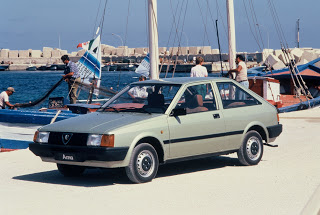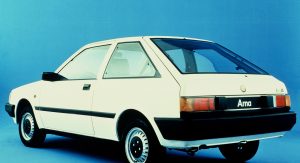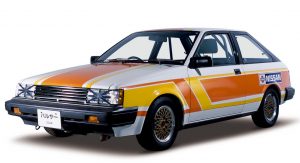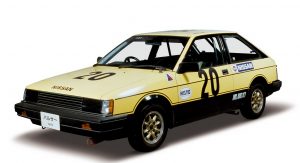When the Nissan Versa was launched in Australia as the Tiida, many automotive watchers were excited by the prospect of blending Renault’s European flair with Nissan’s Japanese reliability. “Here,” they said, “Is a car that’ll please everyone.”
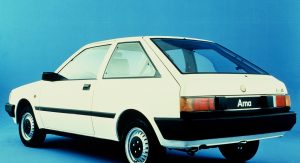 What they got was a narrow-bodied subcompact with so-so styling, a plasticy dashboard, a shocking lack of equipment and an overinflated price tag. Not to mention Kim Cattrall in the TV spots. If this sounds strangely familiar to our older readers, you’re right on the money. Twenty-three years before the crossbred Tiida hit Australian shores, another mongrel was being birthed in Europe.
What they got was a narrow-bodied subcompact with so-so styling, a plasticy dashboard, a shocking lack of equipment and an overinflated price tag. Not to mention Kim Cattrall in the TV spots. If this sounds strangely familiar to our older readers, you’re right on the money. Twenty-three years before the crossbred Tiida hit Australian shores, another mongrel was being birthed in Europe.
It was 1983, and Alfa Romeo had just launched the Arna, an acronym for “Alfa Romeo Nissan Autoveicoli”. The Arna was essentially a N12 series Nissan Pulsar / Cherry with the engine, transmission and front suspension from Alfa’s popular if rust-prone Alfasud. Built in Alfa’s new Pratola Serra factory near Naples, the Arna had the mechanical reliability of the Alfasud and all the style and grace of the Cherry.
In other words, it was a dog.
Although it was available with either of Alfa’s 1.2L or 1.5L flat-four boxer engines, the fact remains that it was a dull Japanese hatchback built by the same uncaring, unionized Italian labour force that had built the Alfasud. In one final irony, the Arna was deported exported to Japan as the Nissan Pulsar Milano, probably giving the Japanese peoples their first (and last) taste of ‘80s Italian engineering.
The Arna died a quiet death in 1987, replaced with the Pininfarina-designed Alfa Romeo 33. The 33 was by no means a great car, though after the Arna, many Alfaistas would have welcomed an yearly rail pass with open arms. Nissan continued to sell the Cherry / Pulsar in Europe, though never met great success in Europe’s highly competitive subcompact car market until the launch of the K11 Micra in 1992. For both manufacturers, the Arna was a miserable failure, remembered only by auto watchers such as yours truly.
By Tristan Hankins




